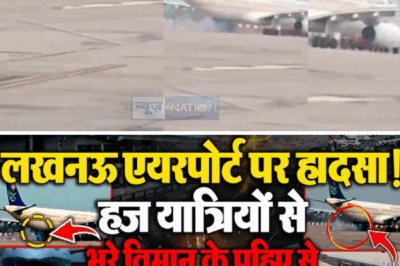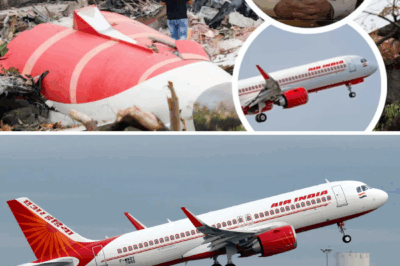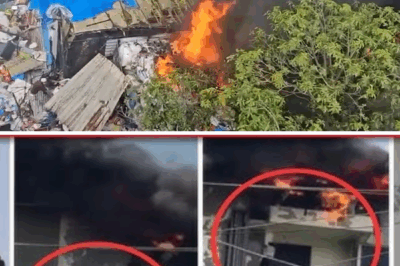Just as the nation was reeling from the recent Ahmedabad plane crash, news of another aviation tragedy emerged—this time near Kedarnath. Early this morning, at around 5:30 AM, a helicopter traveling from Kedarnath Dham to Guptkashi crashed in the Gaurikund area. The accident claimed the lives of all seven people on board, including the pilot and a child. The helicopter was completely destroyed, with its wreckage scattered across the valley.
Rescue teams from the NDRF and SDRF quickly arrived at the scene to recover the bodies and clear the debris. The helicopter belonged to Aryan Aviation, a company providing air services for the Char Dham Yatra. Preliminary reports suggest that poor weather conditions, including dense fog and extremely low visibility, were likely causes of the crash. In response, authorities have temporarily suspended all helicopter services for the Char Dham pilgrimage.

Despite the gravity of the incident, coverage of such accidents is often brief—making headlines for a day before fading from public attention. Yet, these tragedies are not isolated. In the past 35 days alone, there have been four helicopter crashes in the region. Over the last 12 years, Kedarnath has witnessed 14 such accidents.
Whenever such incidents occur, officials and politicians issue statements and promises of stricter safety measures. Today was no different, with Uttarakhand Chief Minister Pushkar Singh Dhami calling for an emergency meeting and instructing aviation companies and the DGCA to enforce stricter SOPs (Standard Operating Procedures). He emphasized the need for experienced pilots in high-altitude areas and announced the establishment of a control and command center. He also promised strict action against those found responsible for the crash.
However, critics argue that these measures are largely ceremonial and rarely lead to lasting change. Private helicopter operators are often accused of prioritizing profits over safety, making multiple risky flights daily and sometimes violating established safety norms. Despite repeated warnings and guidelines from authorities, enforcement remains lax.
Environmental experts, such as Professor S.P. Sati from Garhwal University, have also raised concerns about the environmental impact of frequent helicopter flights in the narrow valleys of the Himalayas. The noise and pollution not only endanger human lives but also disrupt local wildlife and communities. According to Professor Sati, an average of one helicopter accident occurs every ten days in the region—a deeply troubling statistic.
Past attempts at regulation, including fines and temporary suspensions for safety violations, have failed to prevent further accidents. Even after a similar Aryan Aviation helicopter crash in October 2022, which also killed seven people, and subsequent audits and penalties, the situation has not improved. In May and June 2025 alone, four helicopter accidents were reported, prompting further suspensions and reviews by the DGCA.
Despite high ticket prices—around 8,000 rupees per passenger for a round trip between Guptkashi and Kedarnath—pilgrims’ lives remain at risk due to ongoing safety violations. The government has now suspended the Char Dham Yatra by helicopter indefinitely, allowing only foot and other forms of travel.
As investigations continue, the key question remains: Will these tragedies finally lead to meaningful reforms, or will the cycle of accidents and official statements continue? For now, the families of the victims and the countless pilgrims who visit Kedarnath each year await real action to ensure their safety.
News
Saudia Airlines Plane Lands Safely at Lucknow Airport After Technical Issue
A Saudia Airlines plane carrying 242 Haj pilgrims and crew members experienced a technical issue during landing at Lucknow’s Chaudhary…
Air India Flight Returns to Hong Kong Due to Technical Issues
A recent incident involving an Air India flight has raised concerns about the airline’s safety standards. The flight, which was…
Bihar: Wife caught red-handed with lover… now case against husband, leaving the child and asking for divorce!
Husband Accuses Wife of Infidelity, Seeks Police Intervention A heart-wrenching drama has unfolded in Bihar’s Hajipur, where a husband has…
Tragedy Strikes as Indian Doctor’s Family Perishes in Plane Crash
Tragedy Strikes as Indian Doctor’s Family Perishes in Plane Crash A devastating plane crash in Ahmedabad has claimed the lives…
Massive Fire Erupts at Furniture Shop, Flammable Materials Fuel Rapid Spread
A devastating fire broke out at a furniture shop, with strong winds threatening to worsen the situation at any moment….
Nadiya Ke Paar Actor Inder Thakur Died In Plane Crashes With His Family
The classic film Nadiya Ke Paar holds a special place in the hearts of millions, evoking nostalgia for village life…
End of content
No more pages to load












